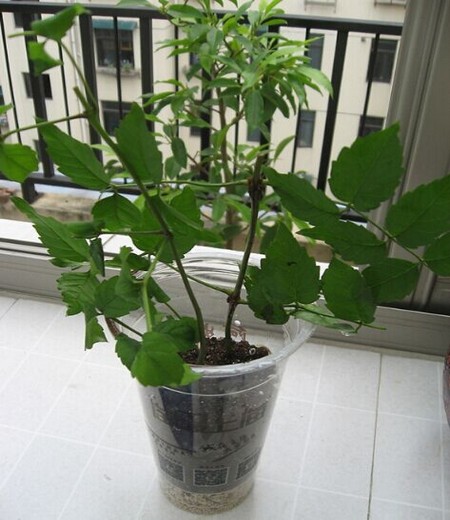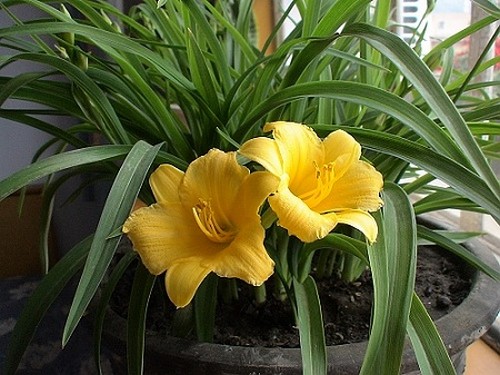Propagation method of Hemerocallis
Hemerocallis is distributed from southern Europe through northern Asia to Japan, but it mainly produces in the Yangtze River Basin of China. It has wide adaptability, like moisture, drought, sunshine and semi-shade. It can grow in general soil, but the sandy loam soil with good drainage and rich humus is the best.
The new buds germinated in early spring, flowering from early June to mid-July, each flower bloomed for one day, and the capsule matured in the middle of August. The aboveground withered in early December and overwintered in the open field.
The propagation technology of Hemerocallis is often used for ramet, sowing and propagation, and it can also be cut, and it is often used in production. Ramets are mostly carried out during sprouting in spring or after defoliation in autumn, and the survival rate is high in spring. The operation of this method is simple, the plant is easy to survive, and the growth is consistent. Ramet can dig out all the mother plant cluster and replant it, or dig out a part of the plant from one side of the mother plant cluster to make seedlings, leaving behind to continue to grow. In spring, it can sprout and blossom in the same year; in autumn, it can sprout and blossom in the following year.
Ramet propagation is carried out after leaf withering or before germination in early spring. Dig up the root plant and cut off the withered root and too many fibrous roots. After one ramet, it can be divided again 4-5 years later, and the seedlings can blossom in the same year.
Plants with exuberant growth, many buds, good quality and free from diseases and insect pests should be selected for transplanting. When ramet, the part of the plant clump should be dug with root, cut from the shortened stem, cut off the old root, rotten root and diseased root, retain the fleshy root, and then be planted after being cut short properly. The plant is usually divided once every two or three years to ensure the growth of the plant.
Generally, in addition to fleshy roots, each clump needs to take 2-3 bud eyes, open holes 30cm, apply sufficient base fertilizer, cover fine soil, compact and water thoroughly, and the ramet can blossom in the same year in spring.
Seed propagation should be sowed in autumn and generally emerge about 4 weeks after sowing. If the summer and autumn seeds are sown immediately after harvest, the seedlings will emerge in about 20 days. The sowing seedlings blossomed after 2 years.
Sowing and propagation should be treated with sand storage in autumn and winter, the seeds germinate quickly and neatly after spring sowing, and the seedlings generally blossom for 2 years. It can also be cut with tender flower buds in summer and cut in vermiculite, which can take root in about one month and blossom the following year.
Time: 2019-06-11 Click:
- Prev

Propagation Methods and Seedling Management of Campsis chinensis
Lingxiao flower originated in central China, has been cultivated for more than 2000 years, Lingxiao complete flowers about 4-5cm, color is very bright, mostly yellow brown to brown. The propagation of Campsis chinensis is mainly based on layering and cuttage. Because Campsis chinensis grows fast and blooms many times, attention should be paid to pruning and fertilization.
- Next

Breeding method of Hemerocallis
Hemerocallis is an artificially cultivated horticultural variety of Hemerocallis. Underground with rhizomes and fleshy fusiform tuberous roots. Leaves basal, striate, arranged in two rows, ca. 25 cm long and 1 cm wide. The plant is 30 cm high, the flower is stout, about 35 cm high. Spiral Cymes with 7 to 10 flowers
Related
- Fuxing push coffee new agricultural production and marketing class: lack of small-scale processing plants
- Jujube rice field leisure farm deep ploughing Yilan for five years to create a space for organic food and play
- Nongyu Farm-A trial of organic papaya for brave women with advanced technology
- Four points for attention in the prevention and control of diseases and insect pests of edible fungi
- How to add nutrient solution to Edible Fungi
- Is there any good way to control edible fungus mites?
- Open Inoculation Technology of Edible Fungi
- Is there any clever way to use fertilizer for edible fungus in winter?
- What agents are used to kill the pathogens of edible fungi in the mushroom shed?
- Rapid drying of Edible Fungi

